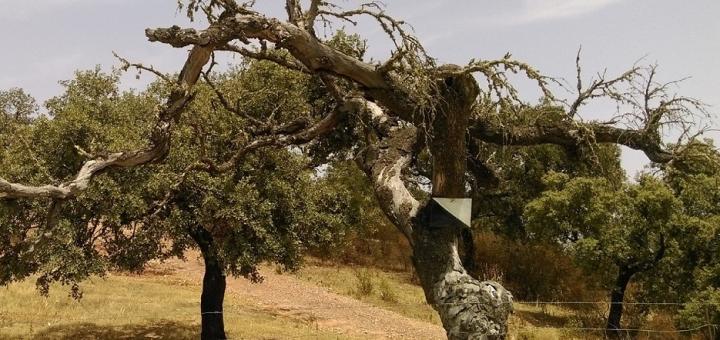Oak tree decline detected by advanced remote sensing techniques

Credit: Swansea University.
Using advanced remote sensing techniques can help the early detection of oak tree decline and control many other forest diseases worldwide, says new research from Swansea University.
The research published in Remote Sensing of Environment examined holm oak decline, which in its early stages causes changes to the tree’s physiological condition that is not readily visible. It is only later, when the tree is more advanced in its decline, that outward changes to its leaf pigment and canopy structure become apparent.
The researchers used an integrated approach of hyperspectral and thermal imaging, a 3-D radiative transfer model and field surveys of more than 1100 trees with varying severity of disease, which enabled them to successfully predict of holm oak decline at an early stage.
The research, which was in collaboration with the University of Cordoba, the Spanish National Research Council and the University of Melbourne, concluded that this integrated approach is vital to the large-scale monitoring of forest decline.
Lead author of the research, Alberto Hornero of the Department of Geography said: “It is essential to monitor trees for harmful forest diseases before the symptoms become visible. When the trees start to dry out or lose their leaves, it is simply too late to start treating and managing these hollow forests. Our research has shown that having a range of tools like advanced airborne imagery and satellite data observations will help us understand and monitor the physiological state of our oak trees and could potentially apply to many other forest diseases worldwide.”
###
Media Contact
Delyth Purchase
[email protected]
Original Source
https:/
Related Journal Article
http://dx.




